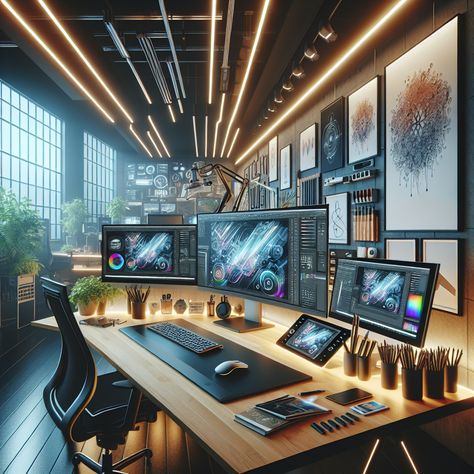Interaction design (IxD) is a crucial element of user experience (UX) design. It determines how well users engage with digital products, ensuring intuitive, seamless, and meaningful interactions.
If you’re wondering how to learn interaction design online, you’re not alone. With the right resources, tutorials, and guided courses, you can build strong interaction design skills from scratch and start creating digital experiences that truly resonate with users.
A strong foundation in interaction design helps designers create interfaces that translate user needs, emotions, and expectations into actionable screen flows, ultimately enhancing usability and engagement.
For aspiring designers, mastering interaction design is about understanding how to create logical and intuitive experiences that guide user behavior. The demand for skilled interaction designers is growing rapidly, making it a valuable skill for those looking to enter or advance in UX/UI design.
If you’re eager to break into this field, learning interaction design online is one of the most effective and flexible ways to gain expertise. With countless resources and strategies available, you can navigate the learning process and build a strong foundation, practice essential skills, and develop the expertise needed to thrive in the world of interaction design.

Why Mastering Interaction Design Can Elevate Your UX Skills
Interaction design (IxD) plays a crucial role in shaping user experiences by focusing on how users engage with digital interfaces. It goes beyond just aesthetics; it ensures that every design decision facilitates a smooth, intuitive, and meaningful interaction.
At its core, interaction design translates user needs, emotions, and expectations into seamless screen flows that guide user behavior.
Mastering interaction design is essential because it determines the success of any UX/UI project. A well-designed interaction system ensures that users can navigate an interface effortlessly, understand its functions intuitively, and take desired actions without confusion.
This is why businesses prioritize hiring skilled interaction designers; because great interaction design leads to improved user satisfaction, higher engagement, and better conversion rates.
When you learn interaction design online, you gain the ability to create digital experiences that feel natural and engaging. Whether you’re designing mobile apps, websites, or even voice-based applications, understanding interaction design principles will allow you to craft user-friendly interfaces that align with modern expectations.
The good news is that you don’t need to enroll in a traditional classroom setting to gain this expertise: numerous online resources, courses, and communities can help you build your skills from the comfort of your home.
Now that we’ve established the significance of interaction design, let’s explore the most effective ways to learn it online and develop a competitive edge in the UX/UI field.
How to Learn Interaction Design Online
1. Start with Free Online Courses to Get a Strong Foundation
If you’re just starting out, one of the best ways to learn interaction design online is by taking free courses. These courses often cover the fundamentals of interaction design, including principles of usability, information architecture, and visual design.
Platforms like Coursera, edX, and Udemy offer free introductory courses to help you get started.
Look for courses that focus on the core concepts of interaction design, such as user flow, wireframing, and prototyping. These foundational skills will give you a solid understanding of the design process and prepare you for more advanced topics.

2. Enroll in Specialized Interaction Design Bootcamps
For those looking to dive deeper into interaction design, bootcamps are an excellent choice. These intensive, structured programs are designed to teach you practical skills in a short period of time.
Bootcamps like Springboard, Designlab, and CareerFoundry offer specialized interaction design courses online that cover everything from creating interactive prototypes to user testing.
What’s great about bootcamps is their hands-on approach, where you work on real-world projects and build a portfolio. This is a crucial part of learning interaction design online because it helps you demonstrate your skills to potential employers or clients.
3. Follow Industry-Leading Design Blogs and Resources
Another effective way to learn interaction design online is by staying updated with the latest trends and best practices through blogs, design communities, and online resources. Websites like Smashing Magazine, A List Apart, and UX Design.cc regularly publish articles on interaction design and user experience.
By following these resources, you can learn from industry leaders, understand the latest tools and techniques, and stay informed about evolving trends. Reading case studies and expert insights will help you deepen your understanding of interaction design while exposing you to real-world applications.
4. Join Online Communities and Forums
Learning interaction design online isn’t just about watching videos or reading articles; it’s also about engaging with a community of designers. Joining online communities and forums can be an invaluable way to get feedback on your work, collaborate with others, and learn from people with more experience.

Platforms like Dribbble, Behance, and Reddit’s design forums provide great opportunities for interaction designers to share their projects, ask questions, and get constructive feedback. Participating in these communities can also help you build connections and network with other designers, which is essential for career growth.
5. Take Advantage of Interactive Design Tools and Software
To learn interaction design online, you need to get hands-on with the tools used by professionals in the field. Programs like Sketch, Figma, Adobe XD, and InVision are some of the most popular tools for interaction design. These tools allow you to create interactive prototypes, wireframes, and user interfaces that you can test with real users.
Many of these tools offer free versions or trial periods, making them accessible for beginners. Once you’re comfortable with the software, you can apply your learning to create prototypes for your own projects and gain practical experience.
6. Participate in Design Challenges and Projects
A great way to practice what you’ve learned about interaction design online is by participating in design challenges and projects. Websites like Frontend Mentor and UX Design Challenges offer design problems that you can work on and submit for feedback.
These challenges simulate real-world projects and allow you to practice solving problems under time constraints, which is a key skill for any interaction designer.
Completing design challenges will also help you build a portfolio of work that you can showcase to potential employers or clients. The more projects you complete, the more confident you’ll become in your abilities.
7. Learn by Teaching Others
One of the most effective ways to master interaction design is by teaching others. By explaining the concepts you’ve learned, you reinforce your own knowledge and identify areas for improvement.
Start by writing blog posts, creating tutorials, or hosting online workshops where you teach other aspiring designers the basics of interaction design.

By teaching others, you’ll also become a part of the design community, gain recognition for your expertise, and build your personal brand as an interaction designer.
Summary
To master learn and master interaction design online, you need a structured approach that equips you with the right knowledge, skills, and hands-on experience. By exploring free courses, enrolling in specialized bootcamps, engaging with design communities, and practicing with industry-standard tools, you can steadily build expertise in this field.
Whether you’re looking to transition into a UX/UI design career, refine your existing skills, or develop a portfolio that showcases your abilities, learning interaction design offers exciting opportunities. Start your journey today and take the first step toward creating intuitive, user-friendly digital experiences that define the future of design.
